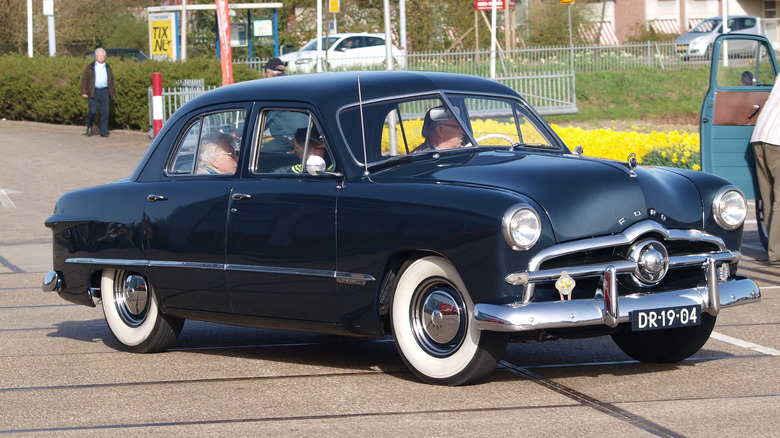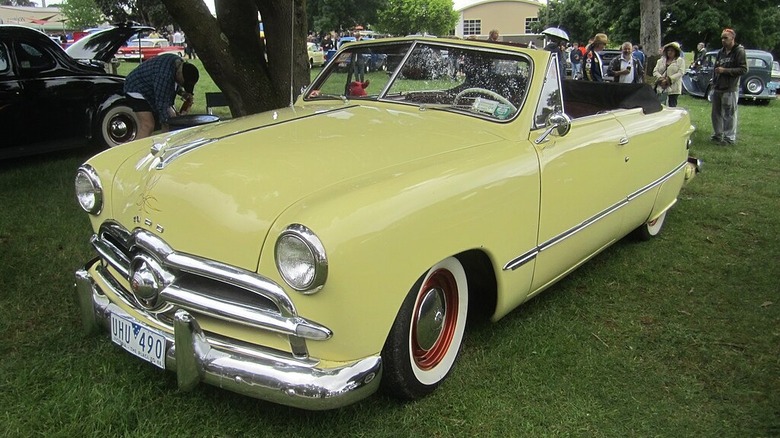Why Is The 1949 Ford Called 'Shoebox?'
When World War II ended on September 2, 1945, the U.S. automobile industry hadn't built a single new civilian vehicle for almost three years. Why? In January 1942, the Office of Production Management mandated that all car makers, including Ford, cease selling, delivering, and producing civilian cars by February 22 and shift gears toward building trucks, jeeps, airplanes, tanks, and other equipment for the war effort.
Henry Ford II (Edsel Ford's son) was named President of Ford three weeks after the end of World War II. Like most car makers who made it through to the other side intact, the company was hemorrhaging money and needed a fresh new look to save it. Eugene T. "Bob" Gregorie had been chief stylist for years but wasn't having any success creating something that appealed to a populace that had just been through a traumatic period of social and economic upheaval.
Ford took the bold step of outsourcing the design work to George Walker, a move that reaped immediate dividends. Walker's "Forty-Niner" was such a hit that it went into production two years later. Front and rear fenders were integrated into the sheet metal instead of being the separate (and removable) components they'd always been. The running boards were also removed, making it the first production Ford without them. This look created clean lines and helped spark the aerodynamic revolution. Dubbed the "shoebox" thanks to its sophisticated slab-sided look that reminded people of a shoebox, its influential design won the Fashion Academy Award in 1949. Ford built 1,118,762 of these vehicles in 1949, saving the company from financial ruin.
The sleek shoebox saved Ford
The '49 was available as a Ford or a Ford Custom; both were offered as a two-door sedan (called a "Tudor"), a four-door sedan (a "Fordor"), and a club coupe. Convertibles and station wagons (which became the Country Squire, one of our favorite wood-paneled vehicles of all time, in 1951) were only available in the Custom line, and a three-passenger coupe came only in the standard Ford line. These "Shoeboxes" were only sold between 1949 and 1951, during which more than 3,000,000 were built.
Ford made some changes in 1950 using the sales slogan "Fifty Way Finer for 1950," including stiffening the body and adding push-button door handles and a new "Keystone" logo to the hood. Standard trim was converted into the Deluxe line, and the Custom morphed into the Custom Deluxe. Chevy was doing well with its Bel Air hardtop, so a special Tudor called the Crestliner was made to compete, but it ultimately only sold 17,601 units. Still, Ford managed to sell 1,206,739 units in 1950.
In 1951, the automaker introduced "Fordomatic Drive," a new automatic transmission option that made the car easier to handle. A lower hood design coupled with a wider wrap-around bumper and a dual-spinner grille made the car's front end look bigger. Ford sold 900,770 units in 1951. Together, the Shoeboxes are considered not only the cars that saved Ford, but also provided a significant inspiration for incorporating aerodynamics into modern car design, which today is a primary design consideration in the automobile industry.

